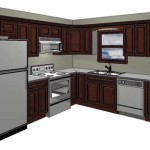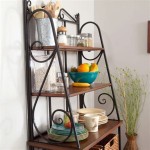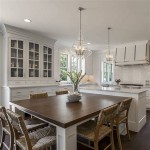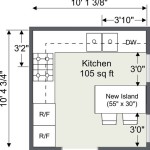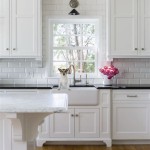Kitchen Light Fixtures Under Cabinet: Illuminating Functionality and Style
Under-cabinet lighting in the kitchen represents a functional and aesthetic enhancement that has gained significant popularity in recent years. These light fixtures, mounted beneath kitchen cabinets, provide targeted illumination to countertops and workspaces, improving visibility and safety while simultaneously adding a layer of sophistication to kitchen design. Choosing the right under-cabinet lighting involves considering several factors, including light source, fixture type, installation method, and aesthetic compatibility with the existing kitchen décor. This article will explore the various aspects of kitchen under-cabinet lighting, providing guidance on selecting and implementing the most suitable options.
Types of Under-Cabinet Light Fixtures
The market offers a diverse range of under-cabinet light fixtures, each with unique characteristics regarding light quality, energy efficiency, installation complexity, and cost. Understanding these distinctions is crucial for making an informed decision.
Linear Lights: These fixtures typically consist of long, slender housings that accommodate multiple light sources, such as incandescent bulbs, fluorescent tubes, or LED strips. Linear lights offer a broad and even distribution of light across the countertop, which is particularly beneficial for larger workspaces. They are often favored for their ability to minimize shadows and ensure consistent illumination. The choice of light source within the linear housing significantly impacts the fixture's energy consumption and light quality. Incandescent bulbs, while offering a warm light, are less energy-efficient than fluorescent or LED options. Fluorescent tubes provide a brighter and more energy-efficient alternative, but they may contain mercury, necessitating proper disposal procedures. LED strips, discussed in more detail below, have become increasingly popular due to their superior energy efficiency, long lifespan, and versatility.
Puck Lights: Characterized by their small, circular design, puck lights offer a more focused and localized illumination. They are often used to highlight specific areas of the countertop, such as a cutting board or a preparation station. Puck lights are available in both wired and wireless configurations, providing flexibility in installation. Wired puck lights require a connection to the electrical system, typically involving drilling and wiring. Wireless puck lights, powered by batteries, offer a simpler installation process but necessitate periodic battery replacements. The light source in puck lights can vary, including halogen bulbs, incandescent bulbs, and LEDs. LED puck lights are generally preferred for their energy efficiency and long lifespan. The spacing and placement of puck lights are critical to achieve uniform illumination and avoid creating harsh shadows. Careful consideration should be given to the distance between lights and the desired level of brightness.
LED Strip Lights: LED strip lights have emerged as a leading choice for under-cabinet lighting due to their numerous advantages. These flexible strips consist of small, surface-mounted LEDs that are adhered to a thin, flexible substrate. LED strip lights offer exceptional energy efficiency, consuming significantly less power than traditional incandescent or fluorescent lights. They also boast a remarkably long lifespan, typically lasting for tens of thousands of hours. This extended lifespan reduces the need for frequent replacements, minimizing maintenance costs. Another key advantage of LED strip lights is their versatility. They can be easily cut to custom lengths, allowing for precise fitting to the contours of the cabinets. LED strip lights are available in a wide range of color temperatures, from warm white to cool white, enabling homeowners to customize the lighting to match their preferences and the overall kitchen design. Furthermore, many LED strip lights are dimmable, providing further control over the light intensity. Installation of LED strip lights is generally straightforward, involving peeling off the adhesive backing and attaching the strip to the underside of the cabinets. A power supply is required to convert the standard AC voltage to the low DC voltage required by the LEDs. Some LED strip lights come with pre-wired connectors, simplifying the installation process.
Factors to Consider When Choosing Under-Cabinet Lighting
Selecting the appropriate under-cabinet lighting involves a comprehensive assessment of various factors to ensure optimal functionality, aesthetics, and energy efficiency. Considering these factors will help homeowners make an informed decision that aligns with their specific needs and preferences.
Brightness and Color Temperature: The brightness of under-cabinet lighting is typically measured in lumens. The appropriate lumen output depends on the size of the workspace and the desired level of illumination. As a general guideline, 300-400 lumens per linear foot of countertop is often recommended. However, this can vary based on individual preferences and the color of the countertops. Darker countertops may require more lumens to achieve adequate brightness. The color temperature of the light, measured in Kelvin (K), affects the overall ambiance of the kitchen. Warmer color temperatures (2700K-3000K) create a cozy and inviting atmosphere, while cooler color temperatures (4000K-5000K) provide a brighter and more energetic feel. The choice of color temperature should complement the existing kitchen décor and the homeowner's lighting preferences. It is advisable to consider the color temperature of other light sources in the kitchen, such as overhead lighting, to ensure a cohesive and harmonious lighting scheme.
Energy Efficiency: Energy efficiency is a crucial consideration, particularly for homeowners seeking to minimize their electricity bills and reduce their environmental impact. LED lighting offers the highest energy efficiency, consuming significantly less power than incandescent or halogen bulbs. The energy efficiency of a light fixture is typically measured in lumens per watt (LPW). A higher LPW value indicates greater energy efficiency. When selecting under-cabinet lighting, it is advisable to compare the LPW values of different options to make an informed decision. In addition to energy efficiency, the lifespan of the light source also contributes to long-term cost savings. LED lights have a significantly longer lifespan than traditional light sources, reducing the frequency of replacements and minimizing maintenance costs. Some under-cabinet lighting fixtures are equipped with energy-saving features, such as dimming capabilities and automatic shut-off timers.
Installation and Wiring: The installation process for under-cabinet lighting can vary depending on the type of fixture and the existing electrical infrastructure. Wired fixtures require a connection to the electrical system, which may involve running wires through walls or ceilings. This type of installation is typically best left to a qualified electrician. Wireless fixtures, powered by batteries or rechargeable units, offer a simpler installation process but necessitate periodic battery replacements or recharging. Some under-cabinet lighting fixtures come with pre-wired connectors and mounting hardware, simplifying the installation process. Before installing under-cabinet lighting, it is essential to ensure that the electrical system is properly grounded and that all applicable building codes are followed. It is also advisable to consult with a qualified electrician to determine the best wiring configuration and to ensure safe and compliant installation. Consider the accessibility of power outlets and the potential need for additional outlets or wiring. Planning the installation carefully can minimize the complexity and ensure a smooth and successful outcome.
Placement and Design Considerations
The placement of under-cabinet lighting significantly impacts its effectiveness and aesthetic appeal. Strategic placement can maximize illumination, minimize shadows, and enhance the overall kitchen design. Careful consideration should be given to the height and depth of the cabinets, the location of workspaces, and the desired level of brightness.
Optimal Height and Depth: The optimal height for under-cabinet lighting typically ranges from 18 to 24 inches above the countertop. This height provides adequate illumination without creating excessive glare or shadows. The depth of the cabinets should also be considered. If the cabinets are relatively shallow, the light fixtures may need to be mounted closer to the front edge of the cabinet to ensure adequate coverage of the countertop. For deeper cabinets, the light fixtures may need to be positioned further back to avoid creating shadows under the cabinets. Experimentation with different placement options can help to determine the optimal height and depth for achieving uniform illumination. Consider using temporary adhesive to test different positions before permanently installing the light fixtures.
Task Lighting vs. Ambient Lighting: Under-cabinet lighting can serve both task lighting and ambient lighting purposes. Task lighting provides focused illumination for specific tasks, such as food preparation and cooking. Ambient lighting provides a softer, more general illumination that enhances the overall ambiance of the kitchen. When selecting under-cabinet lighting, it is important to consider the primary purpose of the lighting. If the primary purpose is task lighting, brighter and more focused light sources may be preferred. If the primary purpose is ambient lighting, dimmer and more diffuse light sources may be more appropriate. Combining both task lighting and ambient lighting can create a more versatile and functional kitchen lighting scheme. Dimmable under-cabinet lighting allows for adjusting the light intensity to suit different tasks and moods.
Complementing Existing Lighting: Under-cabinet lighting should complement the existing lighting in the kitchen, including overhead lighting, pendant lighting, and natural light. The color temperature and brightness of the under-cabinet lighting should be consistent with the other light sources to create a cohesive and harmonious lighting scheme. Consider the overall style and décor of the kitchen when selecting under-cabinet lighting. The light fixtures should blend seamlessly with the existing cabinets, countertops, and appliances. Choosing light fixtures that complement the kitchen's design aesthetic can enhance the overall appeal of the space. Pay attention to the finish and style of the light fixtures, ensuring that they match the hardware and other decorative elements in the kitchen.
Under Cabinet Lighting

Bar Light Fixtures Kitchen Under Cabinet Lighting

5 Types Of Under Cabinet Lighting Pros Cons 1000bulbs Blog

Led Under Cabinet Lighting Low Voltage Lights

Enbrighten 18 In Plug Led Under Cabinet Light Fixture White

4pcs Rgb Led Under Cabinet Lights Closet Puck Colour Singapore Ubuy

Do You Need A Valance For Under Cabinet Lighting Lumaz

7 Must Have Led Lights For Your Kitchen

Guide To Under Cabinet Kitchen Lights Simple Lighting Blog

Choosing The Best Light Fixtures For Kitchen Under Cabinet Lighting

